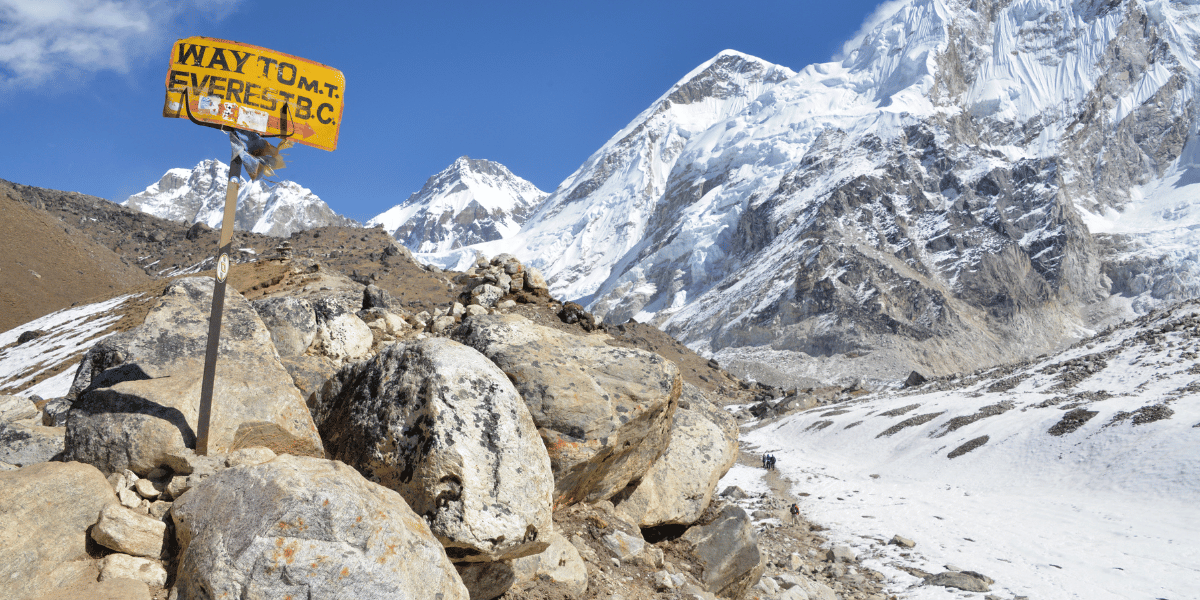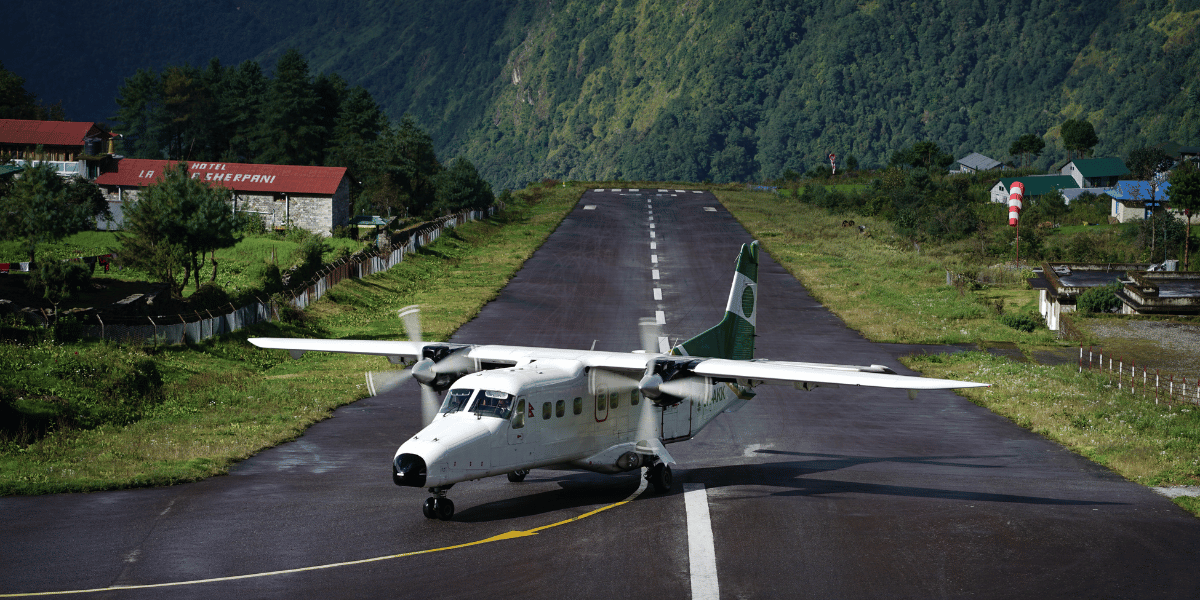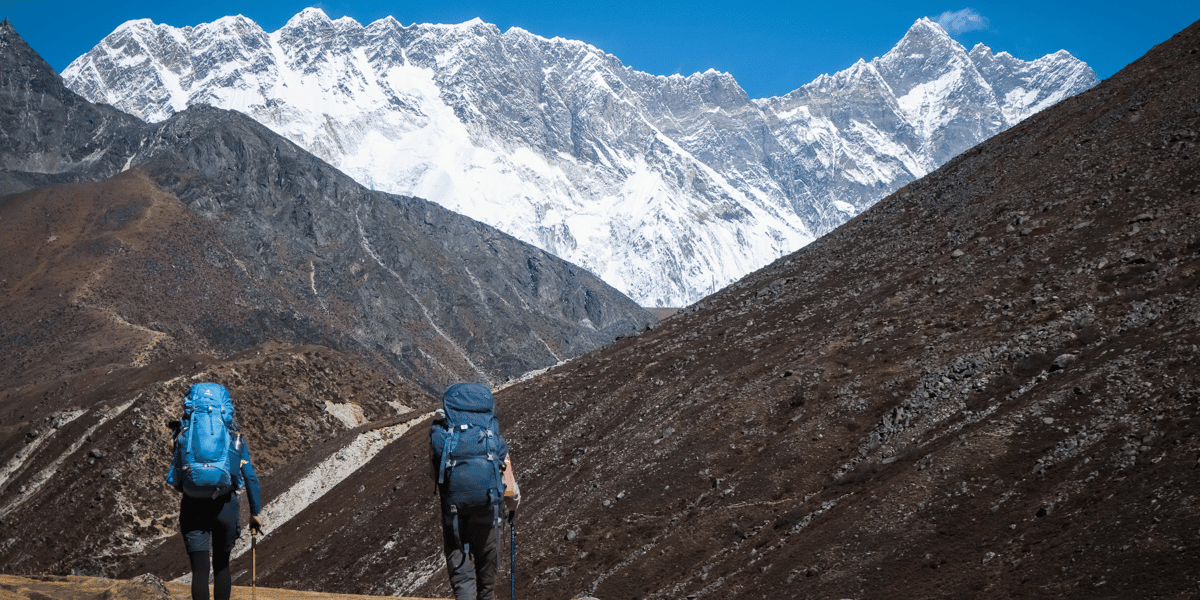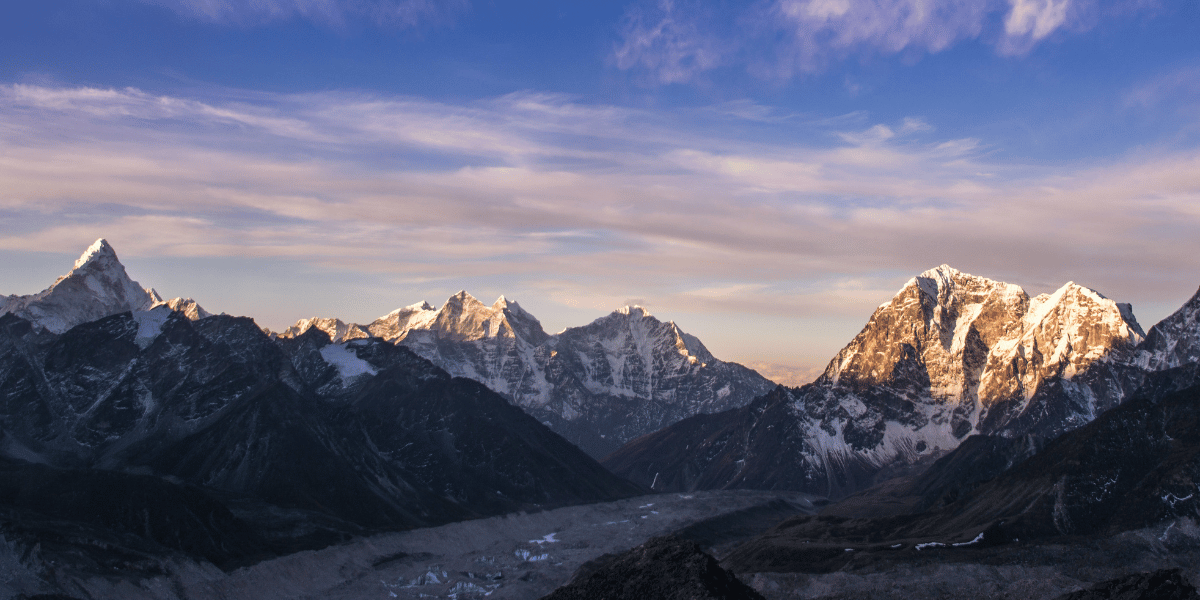This trek to Everest Base Camp is extremely popular, taking you to the base of the world's tallest mountain, Mt. Everest. Located in one of Nepal's 12 stunning national parks, Sagarmatha National Park provides a stunning trek to the Everest Base Camp at an altitude of 5,364m/17,598 ft. Set off on a 16-day adventure to fully experience the astonishing blend of nature, culture, rejuvenating hikes, and majestic snow-covered peaks surrounding you. Travel on an exhilarating journey through a variety of landscapes, highlighting the resilient Sherpas and their rich culture, all while experiencing an intense sense of accomplishment. Are you intrigued by the idea of encountering Mt. Everest up close? If you answered yes, then this trek is perfect for you to catch a glimpse of the tallest mountain in the world. Experience a perfect blend of bustling city life and peaceful trekking routes in one unforgettable adventure. Experience the vibrant culture of Nepal during your journey. Get ready for an exciting trekking adventure through magnificent trails, with the backdrop of lush alpine forests and the majestic view of Mt. Everest. Get started on a journey through breathtaking natural beauty and dramatic high-altitude terrain towards the majestic peaks.
Throughout this trek, you will witness and experience various sights, from stunning natural vistas to immersing yourself in the local culture within the city before embarking on your journey. There are numerous things to see and experience throughout your stay in Nepal, as the country is rich in natural and cultural aspects. Nepal boasts stunning natural beauty and a rich cultural tapestry, with the world's highest mountains and unique cultures in every region. Experience the cultural beauty of Nepal through sightseeing in Kathmandu, where you will visit historical sites and explore its beauty. While on a trek, you will experience the trek and the magnificent places and views within the Sagarmatha National Park.
Kathmandu Sightseeing
When in Kathmandu, you'll find yourself surrounded by intriguing temples, cultural landmarks, and the lively hustle and bustle of people going about their daily lives in sync with the rhythm of the city. While in the city, you will be surrounded by ancient monuments scattered all over, giving Kathmandu a unique and rustic vibe alongside the high-rise buildings and modern development. Before going on a trekking journey, you will have the opportunity to explore the city during a sightseeing programme. You will visit places listed as UNESCO World Heritage Sites that showcase the rich history and art of the country. Kathmandu boasts a wealth of captivating history, with numerous beautiful landmarks meticulously preserved throughout the city. The majority of these landmarks are religious sites, reflecting Nepal's extensive cultural heritage. During your stay, you will visit a few of these places, which will provide you with insight into the country's ancient beauty. Commencing from Kathmandu Durbar Square, a former royal palace situated in the heart of Kathmandu. This royal palace in Nepal is open to the public for exploration and to witness its beauty. This place is not just a single building; it is a collection of historical architecture ranging from palaces and courtyards to temples, all within a square. Another notable site is Swayambhunath, also known as the 'Monkey Temple', situated atop a hill. It is a religious site that pays tribute to both Hindu and Buddhist traditions, promoting religious harmony. Located on top of a hill, this place requires climbing numerous steps. The view from the top is worth it, as you can see the entire Kathmandu city from here. Another one is Pashupatinath Temple, which is a Hindu temple dedicated to the deity Shiva. This Hindu pilgrimage site is considered one of the most significant for devotees of Shiva. The pilgrimage area showcases incredible architectural designs from the Malla Era, predominantly featuring Pagoda style structures. Finally, Boudhanath Stupa is a significant Buddhist religious site and one of the largest stupas in the world. The architectural and religious significance to the people is remarkable, as thousands of devotees visit this place to pay homage. The entire stupa is adorned with vibrant prayer flags that are believed to spread peace worldwide.
Gateway to Everest
Lukla is situated on top of a cliff with a significant drop at the end of the runway leading directly to the bottom of the valley. It is incredibly rewarding and allows trekkers to experience the beauty and culture of the region uniquely. The beauty surrounding this place is truly remarkable, and the journey to get here is equally impressive. This place can be accessed by a domestic flight from Kathmandu, which is a thrilling and fascinating experience that will surely get your adrenaline pumping. Lukla features an airport known as the Tenzing Hillary Airport, which has one of the shortest runways in the world. Lukla is a key starting point for the popular Everest Base Camp trek from various parts of the country.
Namche Bazaar - The Sherpa Hub
Namche Bazaar is a historical trading route that showcases the amazing culture and history of the Sherpas, which is quite popular in mountaineering. At an elevation of 3440m above sea level, this stop is quite popular for trekkers to acclimatise to and explore the beauty of the place. This place in the Everest region offers a range of facilities, including hotels, bars, coffee shops, ATMs, and more, making it a great destination for a stay or exploration. The view of the great Himalayan peaks from anywhere in the valley is stunning. Namche still retains its ancient culture, tradition, and heartwarming hospitality despite the luxury facilities available there. It boasts a panoramic view of incredible peaks such as Kongde Ri (6,187m), Thamserku (6,623m), Nuptse (7,861m), and others.
Everest Base Camp
The Everest Base Camp is one of the best places and the major highlight of the trek, as it offers an ultimate view of the mountains and breathtaking scenery. For trekkers, it is a viewpoint, and for experienced adventurers, it is the place to acclimatise before initially climbing Mt. Everest. Located at an altitude of 5,364m (17,598 ft) above sea level, Everest Base Camp offers a sense of achievement and stunning views of the Khumbu Icefall and surrounding mountains. From the base camp, you will see the lofty mountains standing right in front of you, including Mt. Everest (8,848m), Lhotse (8,516m), Makalu (8,485m), Cho Oyu (8,188m), Nuptse (7,855m), Pumori (7,165m), Ama Dablam (6,812m), Thamserku (6623m), the glacier, and the amazing surrounding view.
Kala Patthar- Vantage point of Everest
Kala Patthar, which translates to Black Rock in the native language, is the vantage point of Everest that provides a unique and panoramic view of the mountain. The base camp is situated at the base of Everest, offering a partial view of the mountain. However, from Kala Patthar, you can enjoy an unobstructed view of Everest and other peaks. From the top, you will see a 360-degree view of some of the highest peaks in the world, including Mt. Pumori (7,169m), Mt. Everest (8,848m), Lhotse (8516m), the Tibetan peak Changtse, Nuptse (7861m), Amadablam (6,812m), and countless other smaller peaks. It is also popular for sunrise and sunset views, as from here you will get some of the most gorgeous sunrises and sunsets.
What to expect from this trek?
The Everest Base Camp Trek is one of the most sought-after treks in the world, offering a panoramic view of Mt. Everest and other magnificent mountains. Thousands of trekkers travel across the world to join this trek and see the majestic beauty of Nepal and its unique culture. Starting your journey from Kathmandu, you will spend a day exploring the beauty and doing trek preparation. While in Kathmandu, you will go on a sightseeing programme where you will explore the historical landmarks listed as UNESCO World Heritage Sites and gain insight into the country's history and art. After that, you will begin your initial trek by taking a thrilling flight to Lukla, the starting point of the trek. The flight to Lukla is one of the major highlights of the trek, as you will get an aerial view of the Everest Region and the amazing landscape slowly changing from a concrete city to high hills adorned by snow-capped mountains. Once you reach Lukla, you will meet your team, including porters if hired, and begin your trek. Along the way, you will experience the rich Sherpa culture, known for their bravery and expertise in mountaineering. You will trek to some of the most gorgeous villages, such as Namche, also known as the Sherpa hubs, where you will see the rich culture and fantastic atmosphere.
During the trek, you will come across stunning landscapes, ranging from lush alpine forests to gradually transitioning into arid terrain as you approach the destination. Throughout your trek, you will be accommodated at the local lodge and tea houses since there are limited facilities in the remote area. You will find yourself in an amazing location with a celestial view of the mountains and surrounding area, making your journey even more beautiful and worthwhile. There are amazing villages, ancient monasteries, viewpoints, and breathtaking scenery that you will come across. Each day of the trek offers a chance to stay in an enchanting setting with captivating views and opportunities to learn about the history and surroundings. Once you reach the base camp and viewpoint, you will be greeted with a surreal mountain view that looks otherworldly. You'll get to see mountains such as Mt. Lhotse (8,516m), Makalu (8,481m), Cho Oyu (8,188m), Nuptse (7,861m), Pumori (7,161m), and Everest (8,848m) itself along other majestic peaks. Besides the mountains, you will also watch the heavenly sunrise view above the great mountains, which will leave you in awe from a vantage point of Everest - Kala Patthar.
This trek is physically demanding as it takes you to high-altitude terrain, with an average altitude of 2,000m reaching up to 5,000m above sea level. Setting off on this trek necessitates prior trekking experience and being physically fit. Throughout the trek, you will be walking at high altitudes for an average of 4-6 hours a day, which can pose challenges. This trek is considered moderate to strenuous due to the risk of high-altitude sickness. It's not a technical climb, so if you're physically and mentally prepared, you'll likely be able to handle the challenge, and the view at the top is definitely worth it. You will be accompanied by a professional trekking guide who will provide you with all the necessary information during the trek, ensuring your safety and making your journey as easy and enjoyable as possible.
What makes this trek different?
Our Everest Base Camp Trek is considered one of the best in the world, offering a clear view of Mt. Everest and providing a unique trekking experience in Nepal. During this trek, you will walk on a well-maintained trail while enjoying the stunning views of the mountains and unique topography. The landscape switches from lush vegetation to rocky terrain surrounded by mountains. Throughout the trip, you will get to witness the amazing culture of the region and encounter native flora and fauna along the way. During the trek, you will enjoy exhilarating activities like Lukla flights, scenic walks, stays at local lodges, and experiencing local hospitality that will warm your heart. Not to mention the jaw-dropping views of the mountains. Looking for a journey to have an amazing travel experience? Join us for a phenomenal trek to the highlands of Nepal.


 Adventure
Adventure
 Couple
Couple
 Family
Family
 Luxury
Luxury
 Motorbike
Motorbike
 Photography
Photography
 Wildlife
Wildlife
 Yoga
Yoga
 Annapurna
Annapurna
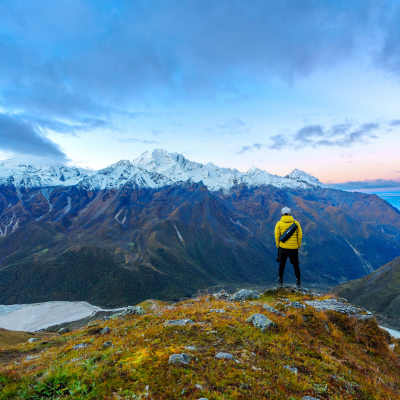 Langtang
Langtang
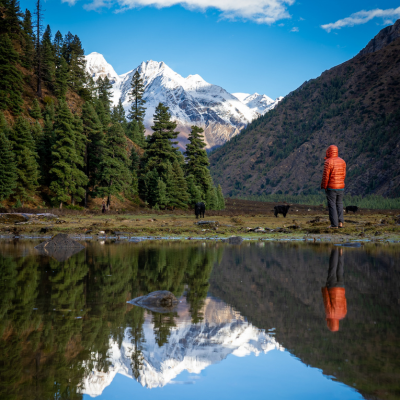 Dolpo
Dolpo
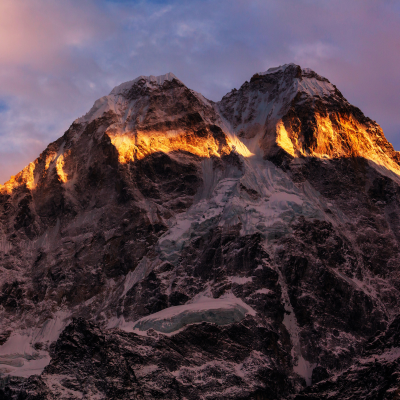 Eastern Nepal
Eastern Nepal
 Everest
Everest
 Manaslu
Manaslu
 Western Nepal
Western Nepal
